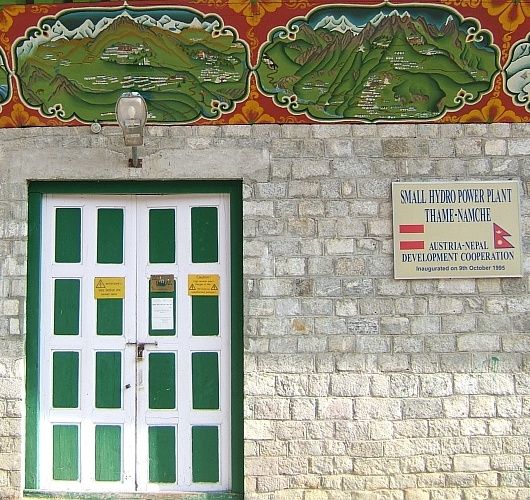Load Shedding
(thomas;2010-Feb-10)
Nepal is a third-world country. Its people are poor (though in general most we have met over the years seem to be a lot less wretched than some people we saw in India). Luckily, the Nepalese are also cheerful, inventive and quite used to winging it, if and when circumstances require it.
However, there is one thing that drives even the most determinedly cheerful and inventive of Nepalese crazy. This is the dreaded practice of load shedding.
There is simply not enough electricity going round. Never was and with all these newfangled things, like plasma TVs and electric cookers, it gets steadily worse. So the Nepal Electricity Authority (NEA) has invented a weekly schedule whereby all big cities and towns are divided into seven zones. Every such zone gets no power for two defined periods per day which shift over the seven days. So this means that in zone 1 there's no electricity in the morning from 5.30 to 7.30 and again later in the evening from 9.30 to 11.30. Zone 2 is in the dark from 7.30am to 9.30am and once again from 5.30pm to 7.30pm, et cetera: you get the idea.
This is clearly a nuisance, but it doesn't sound too bad, does it? Well, the problem with load shedding is that it starts in late October or early November, after the monsoon has faded, with something similar to what I just outlined. But the drier the bigger rivers get during winter and spring, the less electricity is produced (a lot of the available capacity comes from hydropower stations). And the less electricity to go round, the longer the load shedding periods.
Often, in January it's already gone up to two periods of perhaps four or five hours… each! So that means that there no power for eight or ten hours per day. Not so nice.
And it gets worse: every few weeks the NEA releases a new and even tighter schedule (here's the schedule that was current when I wrote this) and so late March or early April often sees a schedule with two periods of six, seven or even eight hours… at which point there's more time in the day without power than with! At the peak (or rather trough) it's quite possible that there is no electricity for a full 16 hours per day: the normal state of affairs is black-out then.
This is certainly bad enough for normal people but it's a killer for industry and commerce: imagine running an internet cafe with that sort of “power supply”. So either companies and businesses have some reliable (but pretty expensive) backup… or they quickly go out of business. Hotels, restaurants, shops: all but the tiniest shacks have their small or not-so-small Japanese or (these days more often) Chinese generators (whether they all have the money to buy petrol is another matter, though).
So when the load is shed and the lights go out, a place either becomes dark and cheerless or it stays bright and turns noisy and smelly. Actually, sputtering Chinese candles and Nepalese cheer (and beer) go a long way, so many places are dark but not that joyless.
In fact, some Nepalese actually wonder why they bother with paying the NEA bills and whether they wouldn't be better off with abandoning electricity altogether… and instead drink more beer.
There are many parts in the country where load shedding doesn't apply, either because they are fortunate and have no electricity at all or because these places have their own supply via a micro-hydropower project, often self-financed and self-supporting. Namche Bazaar, the main village in the Khumbu region, is a case in point. It has such a scheme, called Khumbu Bijuli Company, up and running for many years now.
We have visited the KBC plant, a small but solidly-built stone house with a long, thick steel pipe coming down from a lake above and a big, humming generator inside, in a steep valley above Namche. The generator has a capacity in excess of 620 kW and the whole setup is quite an impressive sight (there's always a technician at hand to show you around). The plant started in the early 1990s as an Austrian project but these days it's run almost exclusively by the Khumbu Nepalese. And the Sherpa lodge owners — for whom this is a vital service — make sure that the whole thing runs like the proverbial clockwork.
Needless to say, we have never seen a load shedding schedule in Namche;-)
$ updated from: Background.htxt Mon 28 Apr 2025 14:55:34 trvl2 — Copyright © 2025 Vero and Thomas Lauer unless otherwise stated | All rights reserved $



